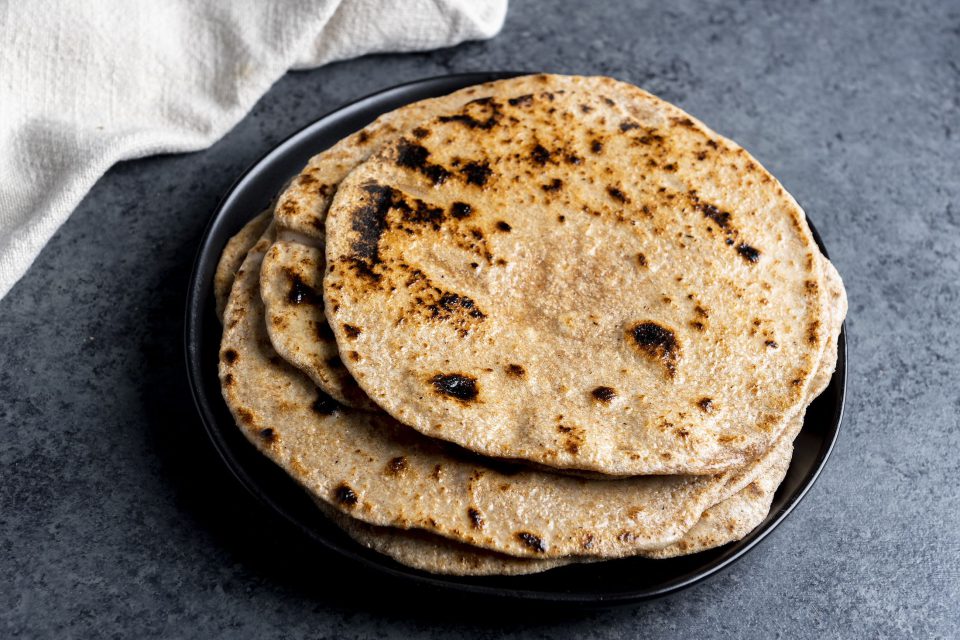Roti, also known as Chapati, is a staple food in many Indian households, often enjoyed fresh with dal or sabji. But what happens when those rotis are left over and stored for the next day? While the idea of eating stale food may not seem appealing to everyone, recent discussions suggest that leftover rotis can actually offer several health benefits. Let’s explore why you might want to reconsider tossing out that extra roti and what makes it even better than a fresh one.
Why Leftover Rotis Might Be Better for You
1. Improved Digestion
When rotis are allowed to cool and age, they undergo a process that makes them easier to digest. The cooling helps improve the growth of beneficial bacteria in your gut, which aids digestion. This can be particularly helpful for people with weak digestion or those who experience frequent indigestion.
2. Better Nutrient Absorption
Even after being stored overnight, rotis retain a significant amount of nutrients such as B vitamins, iron, and fiber. As the roti ages, the complex carbohydrates begin to break down into simpler sugars, making the nutrients more easily absorbed by your body.
3. Weight Management
Stale rotis tend to have fewer calories than fresh ones. This reduction in calorie content makes them a better option for individuals trying to manage their weight. The decreased moisture in leftover rotis can also help reduce water retention in the body, which is beneficial for overall health.
4. Boosting Immunity
One of the benefits of stale rotis is the creation of prebiotics, which help support the growth of a healthy gut microbiome. A well-balanced gut microbiome is essential for boosting immunity and protecting the body from infections.
5. Stable Blood Sugar Levels
Due to the process of aging, stale rotis have a lower glycemic index (GI) compared to fresh ones. This means they are absorbed more slowly into the bloodstream, helping to stabilize blood sugar levels and provide a steady supply of energy throughout the day.
6. Sustainability and Reducing Food Waste
Eating leftover food, including stale rotis, is an excellent way to minimize food wastage. Reusing food items that are still safe to eat supports a more sustainable lifestyle, reducing your environmental footprint.
Transforming Leftover Rotis Into Tasty Dishes
If you’re not keen on eating leftover rotis as they are, don’t worry. They can be transformed into delicious recipes such as roti upma, roti chips, or even added to curries. This makes it easy to enjoy the health benefits of stale rotis while trying out new ways to cook with them.
Potential Downsides of Eating Stale Rotis
While there are many benefits, it’s important to be mindful of the potential downsides:
1. Loss of Protein and Nutrients
Over time, rotis may lose some of their protein and vitamins as they break down during storage. While the impact may be minimal, it’s something to consider if you’re looking to maximize the nutritional content of your meals.
2. Risk of Mold Growth
If not stored properly, leftover rotis can develop mold, especially if kept in the fridge for an extended period. It’s important to store them in an airtight container and consume them within a reasonable time frame to avoid any health risks associated with mold.
Conclusion
Leftover rotis are not only a practical way to reduce food waste but also come with surprising health benefits. From aiding digestion and weight management to boosting immunity and stabilizing blood sugar, there are plenty of reasons to enjoy stale rotis. However, like all food, they should be stored properly and consumed within a safe time frame to avoid any potential risks. So, the next time you have some leftover rotis, don’t hesitate to enjoy them – they might just be better for you than you think!

